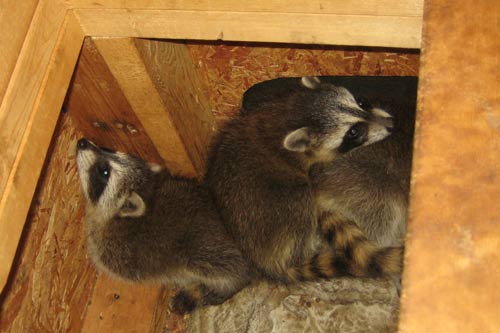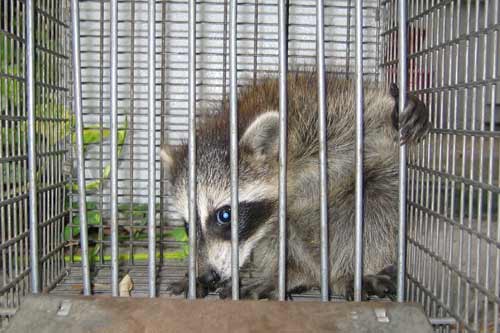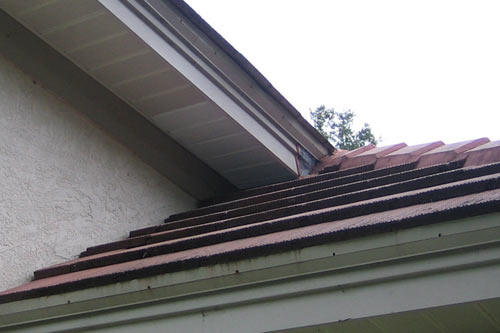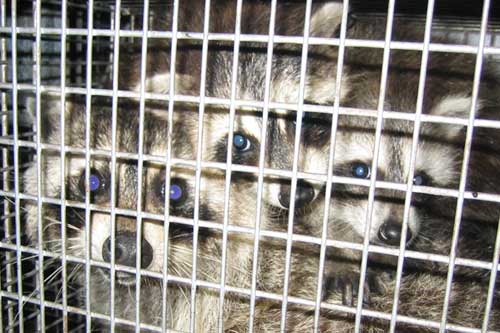-
info@aaanimalcontrol.com
Call us for help in your town
Humane Wildlife Education
Raccoons in the Attic - How to Get Rid of Them
Need raccoon removal in your hometown? We service over 500 USA locations! Click here to hire us in your town and check prices - updated for year 2020.
Raccoons often choose to make their home inside of people's attics. An attic provides
a safe shelter for a raccoon, and usually meets all of their living requirements: shelter
from the elements, safety from predators, and oftentimes close proximity to food - such as
garbage cans or pet food.
If you have a raccoon in the attic, take note of the time of year. If it is springtime, say Feb - June,
then there's a very good chance that the raccoon is actually a mother with a litter of young pups up
in the attic. Female raccoons love to raise their young in a warm, safe attic.
Raccoons can cause quite a bit of damage when they live in an attic. Please see my
raccoon attic damage page for more photos of raccoon damage. Not only do they urinate and defecate in the attic,
but they can bring in a host of parasites (fleas, ticks, mites, and lice) and diseases (raccoon roundworm, leptospirosis, etc).
They often tear apart ductwork, rip insulation off of pipes, gnaw on wires, and trample down the insulation, lowering
its R-value effectiveness. They also tear open holes to gain access to the attic in the first place.
Most people first call me when they hear the noise the animals create. A large animal like a raccoon can
cause quite a bit of racket climbing around and digging in the attic. A litter of young will also often
squeal for their mom, making a loud noise. Some homes are less prone to sound, and the occupants learn about
their raccoon problem when they physically spot the animal, a frequent occurrence with a busy mother
raccoon.

Here we see the culprit - a female raccoon, on the roof near the hole in the soffit that it tore open.

Sure enough, it crawls right inside.

Once inside the attic, I search for the adult. She usually hides down in the eaves, and I can't catch her.

I search until I find the litter of pups. In this case, down a column at the edge of the attic.

I remove the young from the attic. It's very hot in Florida attics!

I set the juveniles in the back of traps, to try to catch the mom.

Sure enough, the mom raccoon enters the trap, lured in by its own baby.

After I have the mom and all the babies out of the attic, I seal the entry points.

I make sure to keep mom and all the young together.
If you have raccoons in your attic, you really should hire a professional wildlife trapper to take
care of the problem. It's not easy to get rid of raccoons in the attic. There's no magic spray or
ultrasonic sound device or any gimmick that will make them leave. They need to be trapped and removed.
It's not work for amateurs or do-it-yourselfers. Some crummy companies or handy homeowners will simply
set a trap or two on the ground, and catch the mom, and get rid of her - only to leave the babies up
in the attic to squeal and suffer and die and then decompose and stink. Please don't try to do this
yourself or hire a cut-rate lazy trapper who won't go into the attic and get the young. The job
has to be done right!
For more raccoon control information, go back to the raccoon removal page.
You can also check out examples of my raccoon removal work on my Raccoon Job Blog

AAAnimal Control is a professional nuisance wildlife control company. It is my goal to provide information so that you can solve your wildlife problem
in an effective and responsible manner. Wildlife services include animal trapping, capture & removal, plus animal damage repairs and preventative measures.
We also offer biological cleanup and many other services. You can always browse this site for more details
and info, about raccoon removal. If you live elsewhere in the US and have found this site and need a local trapper in your area,
click here for a nationwide list of 100's of professional raccoon removal experts.


















